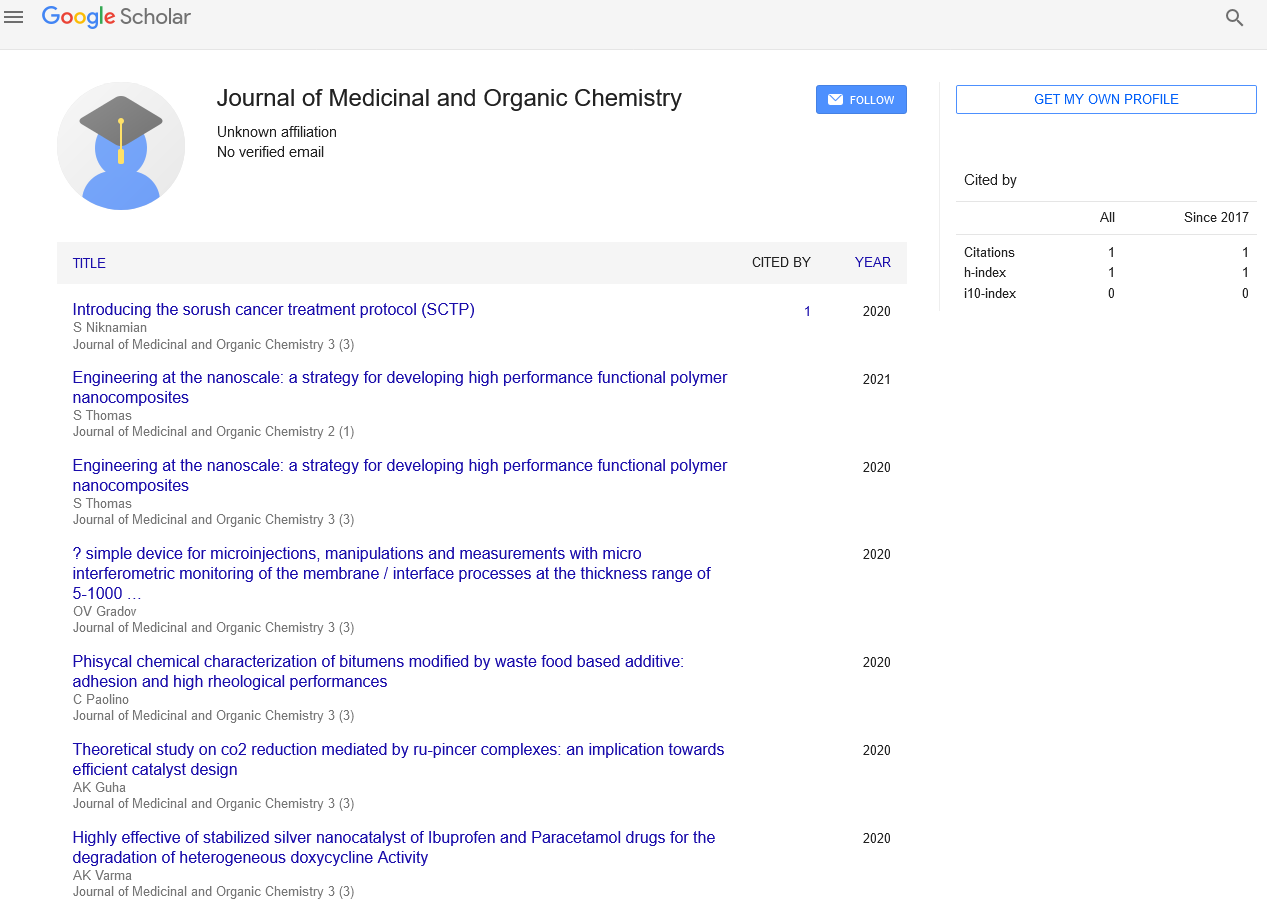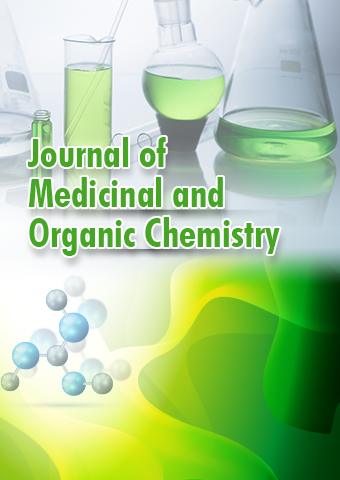Review Article - Journal of Medicinal and Organic Chemistry (2022) Volume 5, Issue 4
Antihypertensive Drug Consumption in Patients with Primary Aldosterone
Liliam Takayama*,Department of Medicine, Renal Division, Hospital das Clinics HCFMUSP, Universidad de Sao Paulo, Sao Paulo
- *Corresponding Author:
- Liliam Takayama*
- Department of Medicine, Renal Division, Hospital das Clinics HCFMUSP, Universidad de Sao Paulo, Sao Paulo
- E-mail:takayama.liliama@univie.ac.at
Abstract
The number of antihypertensive drug classes cannot accurately reflect the total consumption of antihypertensive drugs used to control blood pressure. The defined daily dose has been adopted to permit consumption analysis of many prescribed drugs. The aim of the present study was to assess postoperative changes in antihypertensive drug consumption in patients with primary aldosteronism using the defined daily dose as the unit of measurement. Consumption of antihypertensive drugs decreased postoperatively in 95.4% of patients. The median decrease in the defined daily dose was 76.8%.
.
Keywords
Polycaprolactone • Defined daily dose • Hypertension • Japanese • Laparoscopic Adrenalectomy • Primary aldosteronism
Introduction
Primary aldosteronism (PA) is caused by the autonomous secretion of aldosterone from adrenocortical lesions, and it is associated with hypertension due to sodium retention and hypokalemia due to increased potassium excretion. Aldosterone excess leads to cardiovascular damage, independent of its effects on blood pressure (BP). Primary aldosteronism is primarily caused by an aldosterone- producing adenoma (APA) or by bilateral adrenal hyperplasia (also known as idiopathic hyperaldosteronism) adrenalectomy is the preferred approach to treat patients with unilateral PA such as APA. Despite normalization of the endocrine abnormalities, not all patients with PA have their hypertension cured completely by laparoscopic adrenalectomy. Many predictors of hypertension cure in PA patients have been reported [1]. The number of antihypertensive drug classes can be a robust predictor for postoperative hypertension cure in PA patients. However, it cannot reflect the total consumption of antihypertensive drugs to control BP accurately. Using the number of antihypertensive drug classes as a unit of measurement, the following two types of patients can be regarded as taking an equivalent amount of antihypertensive drugs: patients who take 50 mg of eplerenone and 5 mg of amlodipine and patients who take 100 mg of eplerenone and 10 mg of amlodipine. However, the second type of patient apparently has more severe hypertension, despite taking the equivalent two classes of antihypertensive drugs. The defined daily dose (DDD) has been adopted to assess the consumption of many prescribed drugs. The doses of diverse drugs were calculated in accordance with the standard of the DDD recommended by the World Health Organization (WHO) to compare drug use. DDD system is often applied at the population level; however, in many studies, it can be used to compare individual drug utilization as a unit of measurement. The aim of this study was to assess postoperative changes in antihypertensive drug consumption in PA patients, using the DDD as the measurement unit, and to identify clinical predictors for decreased antihypertensive drug consumption.
Description
Thirty-two male SHR were obtained from Harlan Laboratories Inc. The rats were randomly housed in pairs per cage at 21 ± 2°C with 12-h light and dark cycles, 52 ± 6% relative humidity, and with ad libitum intake of a standard diet (Teklad, Harlan Laboratories) during the experiment[2]. Spontaneously hypertensive rats (27–28 week old and 355 ± 24 g of BW) were randomly split into 4 groups, each group included 8 animals (n = 8). The first and second groups served as negative and positive controls and received purified water and Captopril respectively. The third and fourth groups were administered with milk fermented by lactis NRRL B-50571 and milk fermented respectively. All SHR had free access to each treatment during the 3 week as part of the protocol. Half of the animals of each group were killed at the end of that period. Meanwhile, the rest of the SHR only received purified water during one more week before being killed to determine a possible extended effect after cessation of the treatments. A research animal protocol was followed according to the guidelines established by the institutional ethics committee. The lowering blood pressure effect of milk fermented by specific strains on SHR was monitored over time. Animals were deposited in restrainers in the warming chamber for 20 min at 32°C to detect pulsations [3]. Systolic and diastolic blood pressures were measured 5 times on each conscious animal before treatments and every week during the experiment. Measurements were obtained using the tailcuff method between 9 and 12 h to eliminate circadian cycles. The noninvasive blood pressure system used in this experiment included a photoelectric sensor, an amplifier, an automatic inflation cuff, and software.
The hypolipidemic activity of milk fermented by specific strains were also evaluated in SHR. Blood samples were collected under anesthesia by cardiac puncture in tubes with heparin. Subsequently, samples were centrifuged at 756 × g, 4°C for 10 min to obtain the plasma and they were frozen at −20°C for further studies [4]. Differences between means were assessed by the Tukey- Kramer multiple-comparison test and they were considered significantly different when P < 0.05. Results were processed by the NCSS 2007 statistical program. Data were presented as means ± SEM.
Nutritional composition corresponding to fermented milks is presented. Milk was not significantly different (P > 0.05) from milk with NRRL B-50572. One of the most important macronutrients in fermented milk, which is related to the antihypertensive activity, may be the proteins. They eventually could be hydrolyzed by the proteolytic and peptidolytic systems of strains to form hypotensive peptides. In fact, it was previously shown that the whey isolated from these fermented milk administered to SHR in a single dose was the fraction responsible for the blood pressure-lowering effect[5]. Conversely, the presence of calcium has been associated to an antihypertensive effect. However, only diets including >2.5% of calcium reduce arterial blood pressure. In this study, the calcium contents in milk fermented by NRRL B-50571 and NRRL B-50572 were 368 ± 11.3 and 366 ± 3.0 mg/100 g, respectively, which is equivalent to only 0.81 and 0.83% in the diet. Thus, the effect of calcium could be disregarded.
Acknowledgement
None
Conflict of Interest
None
References
- Ayad EHE. Starter culture development for improving safety and quality of Domiati cheese. Food Microbiol. 26, 533–5419 (2015).
- Brown LM, Han AF. Traits of the metabolic syndrome alter corpulent obesity in LAN, SHR and DSS rats: Behavioral and metabolic interactions with adrenalectomy. Physiol Behav. 103, 98–103 (2011).
- Chobanian AV, Cushman L, Green E et al. The seventh report of the Joint National Committee on Prevention, Detection, Evaluation, and Treatment of High Blood Pressure. JAMA 289, 2560–2572 (2011).
- Civantos B, Aleixandre A. Blood pressure and α-vascular reactivity in hypertensive rats treated with amlodipine and dietary Ca Eur J Pharmacol. 489,101–110 (2004).
- Doggrell SA, Brown L. Rat models of hypertension, cardiac hypertrophy and failure. Cardiovasc Res. 39, 89–105 (1998).
Indexed at, Google Scholar , CrossRef
Indexed at, Google Scholar , CrossRef
Indexed at, Google Scholar, Crossref
Indexed at, Google Scholar , Crossref

